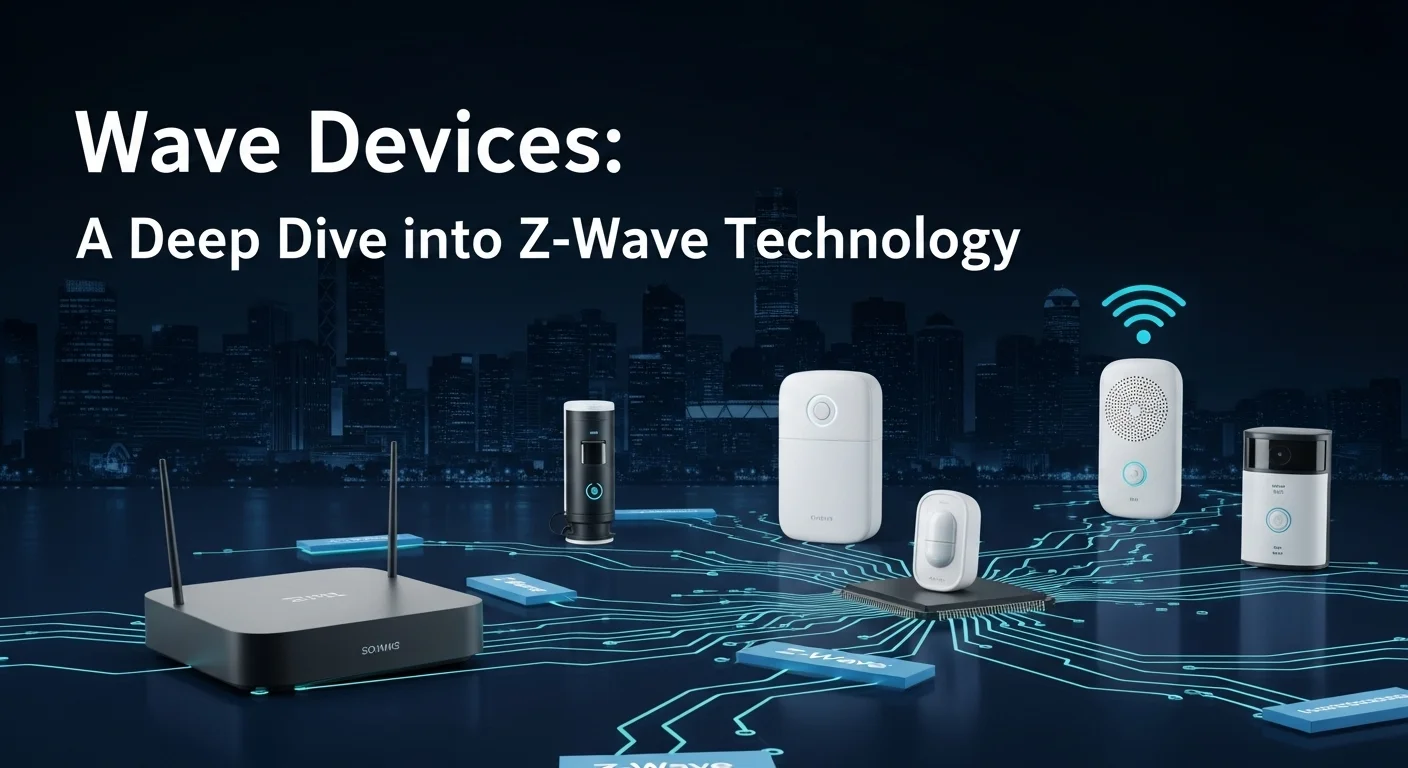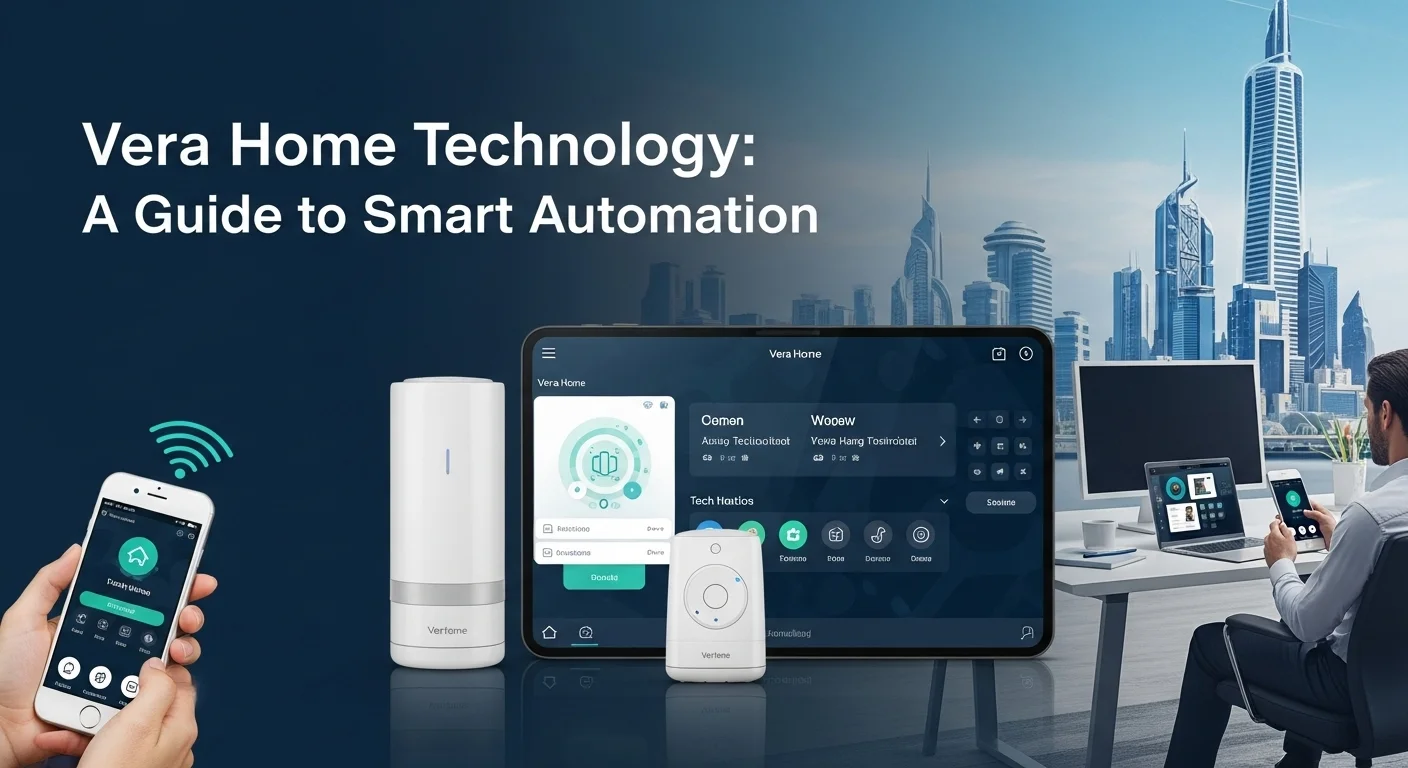Z-Wave Explained: My Personal Guide to a Truly Smart Home

Executive Summary
In this guide, I'm going to walk you through everything you need to know about Z-Wave, one of the most reliable technologies for home automation. Over my years as a smart home integrator, I've seen technologies come and go, but Z-Wave has remained a solid choice for a reason. We'll explore how its unique mesh network creates a super-dependable system for your home or business. We'll look at the latest devices, including the new 800 series and Long Range models that are changing the game. I'll even share some tips for the DIY crowd looking to create custom gadgets. Whether you're just starting out or you're a seasoned pro trying to optimize your network, this article is for you. My goal is to give you the practical, real-world knowledge you need to build a smart, secure, and efficient space.
Table of Contents
Table of Contents
- What is Z-Wave and Why Does It Matter?
- The Magic of Z-Wave: Mesh Networking and Compatibility
- Beyond the Home: Z-Wave in Business
- Exploring the Fun Stuff: New Devices and DIY Projects
What is Z-Wave and Why Does It Matter?
In the world of smart homes, you hear a lot about Wi-Fi and Bluetooth. But there's another major player you absolutely need to know about: Z-Wave. While some people use the broad term 'Wave Devices' for wireless gadgets, Z-Wave is a specific, powerful protocol that’s been my go-to for years, especially for critical things like security and automation. It was created back in 1999 by a company called Zensys, and it was designed from the ground up for one thing: making our homes and businesses smarter.
So, what makes it special? First, unlike your Wi-Fi router and a million other gadgets that shout over each other in the crowded 2.4 GHz frequency, Z-Wave uses a much quieter, lower-frequency band (around 900 MHz in North America). Think of it like having your own private, express lane on the highway while everyone else is stuck in traffic. This means the signal is far more reliable and less prone to interference from your microwave or cordless phone. When you tell your front door to lock, you want to be 100% sure the command gets through. That's the kind of reliability Z-Wave delivers.
The Magic of Z-Wave: Mesh Networking and Compatibility
Here’s where I really fell in love with the technology: its mesh network. With a typical Wi-Fi setup, every device has to talk directly to the router. If a device is too far away, it's out of luck. Z-Wave is smarter. Every device that's plugged into an outlet (like a smart switch or plug) acts as a signal repeater. It can catch a message from the central hub and pass it along to the next device. This creates a 'mesh' that gets stronger and more reliable with every new device you add. If one path gets blocked, the network automatically finds a new route. It's a self-healing system, which from my experience is a massive advantage for a hassle-free smart home.
The other pillar is its strict certification program, managed by the Z-Wave Alliance. This isn't just marketing fluff. It’s a guarantee. If you see the Z-Wave logo on a box, it means that product will work with any other certified Z-Wave product, no matter who made it. You can have a smart lock from Schlage, a light switch from Leviton, and a thermostat from Honeywell, and they'll all speak the same language. This gives you incredible freedom and choice, with over 4,500 certified products out there. It's this promise of a universal ecosystem of compatible devices that makes building a system so straightforward.
Beyond the Home: Z-Wave in Business
This technology isn't just for homeowners. I've helped small and large businesses use Z-Wave to make their operations more efficient and secure. In hotels, it’s used to control lighting and climate in empty rooms, saving a fortune on energy bills. In small retail shops, you can automate the entire opening and closing routine—lights on, security off, temperature set—with a single command. It's a scalable and surprisingly affordable way to automate processes.
Because many Z-Wave sensors are incredibly low-power, they can run on a small battery for years. This makes them perfect for commercial use. You can place a water sensor in a hard-to-reach utility closet or a temperature sensor in a server room and not have to worry about it for a long, long time. It’s a set-it-and-forget-it solution that saves money and manpower.
Exploring the Fun Stuff: New Devices and DIY Projects
The Z-Wave world is always moving forward. We're now seeing the 700 and 800 series chips in the latest devices. These new Z-Wave devices offer incredible improvements: massive range boosts, lightning-fast communication, and battery life of up to 10 years on a single coin cell. The most exciting development for me is Z-Wave Long Range (ZWLR), which can send signals over a mile. This is a game-changer for large properties or even community-wide smart projects.
For the tinkerers out there, you can even build your own DIY Z-Wave devices. Platforms like Z-Uno make it possible for hobbyists to create custom sensors. I've seen people build everything from custom irrigation controllers for their gardens to unique alert systems for their workshops. This lets you create a smart system that's perfectly tailored to your life.
Of course, every network needs a brain, which we call a controller or hub. A good hub is essential. Years ago, many of us relied on hubs like the Vera Plus, and checking for Vera Z-Wave compatible devices was a standard part of buying something new. While specific models change, the lesson remains: choose a powerful, versatile hub that supports a wide range of products. That's the key to unlocking the full potential of your smart home.

A Deeper Dive: How Z-Wave Technology Really Works
To truly appreciate Z-Wave, it helps to understand what's happening under the hood. For my fellow tech enthusiasts and business owners looking for robust solutions, let's break down the technical side of things and how you can leverage it.
The Technical Nitty-Gritty
Z-Wave’s reliability comes from a few key technical choices that set it apart.
1. Its Own Radio Frequency
As I mentioned, Z-Wave uses the sub-1GHz frequency band. This frequency is slightly different depending on your region to meet local laws—North America is on 908.42 MHz, and Europe is on 868.42 MHz. This is a crucial point to remember: a Z-Wave device from the US won't work with a hub from Europe. It might seem like a hassle, but it's the secret sauce for avoiding the digital noise of Wi-Fi and ensuring your commands get through.
2. Mesh vs. Star Network (and the New Long Range)
The classic Z-Wave network is a mesh. The central hub is the general, and it knows the best route to send a message to any soldier in its army, allowing the message to hop between up to four other devices to get to its destination. Mains-powered devices are the sergeants, repeating commands, while battery-powered sensors are the privates—they listen and report but don't repeat signals, to save power.
The newest Z-Wave devices, however, can use a new trick called Z-Wave Long Range (ZWLR). This creates a 'star' network where devices talk directly to the hub from up to a mile away. It's incredible. A ZWLR network can handle up to 4,000 devices, compared to the 232 of a standard mesh. The best part? It can work alongside a traditional mesh, so you can have the best of both worlds.
3. A Common Language: Command Classes
The reason all Z-Wave devices work together is because they speak the same language. This language is made up of 'Command Classes'—standardized commands for every function. For example, the 'Binary Switch' class understands 'On' and 'Off.' The 'Multilevel Sensor' class reports things like temperature. When a product gets Z-Wave certified, it proves it speaks this language fluently. This is what guarantees that universe of compatible devices I talked about.
4. Rock-Solid Security: The S2 Framework
In a smart home, Rock-Solid Security is non-negotiable. I wouldn't recommend a system that wasn't secure. Z-Wave’s current standard, Security 2 (S2), is mandatory for new devices and provides end-to-end encryption. The pairing process is secure, making it incredibly difficult for anyone to snoop on your network. The latest 800-series chips go even further with Secure Vault, which is like having a tiny digital fortress built right into the device's hardware.
Smart Z-Wave Solutions for Your Business
Here’s how I've seen businesses translate these technical features into real-world savings and efficiency.
1. Slash Energy Costs
The most immediate ROI for businesses is energy management. By installing Z-Wave thermostats, dimmers, and motion sensors, you can automate your energy use. Lights automatically turn off in empty conference rooms. The heat is lowered automatically after everyone leaves for the day. I’ve seen offices cut their electricity bills by 20-30% just by implementing these simple automations.
2. Smarter Security and Access
Z-Wave offers a flexible and scalable security platform. You can issue digital 'keys' with smart locks that only work for an employee during their shift. Get instant alerts on your phone if a restricted area is accessed. I worked with a property manager for a multi-unit apartment building who used Z-Wave to manage access and security for over 100 units from a single dashboard. It’s powerful stuff.
3. Automate Your Operations
Think beyond lights and locks. In a restaurant, Z-Wave temperature sensors in the walk-in freezer can send an alert if the temperature rises, preventing thousands of dollars in spoiled food. In a workshop, sensors can monitor equipment for vibrations that signal a need for maintenance before a costly breakdown occurs. It’s about using technology to be proactive instead of reactive.
Helpful Resources and How It Compares
When you're ready to build, you'll need the right info. The Z-Wave Alliance website is your bible for official news and a searchable list of every certified product. For those who want to build a DIY Z-Wave device, communities around Z-Uno and the Silicon Labs developer site are gold mines of information. When choosing a hub, I always recommend one with a strong, active community, like Hubitat or Home Assistant. These platforms have incredible documentation and forums where you can get help with almost any problem.
Compared to its main rival, Zigbee, Z-Wave's biggest strength has always been that guaranteed interoperability. With Zigbee, you sometimes find that devices from different brands don't play nicely together. Wi-Fi is everywhere, but the devices drain batteries quickly and don't have that robust mesh network. For a reliable, secure, and unified smart system for a whole building, Z-Wave has consistently been my top recommendation.

My Pro-Tips for a Flawless Z-Wave Experience
Getting a Z-Wave system up and running is one thing; making it perform beautifully is another. Over the years, I've learned a few tricks and strategies that can make all the difference between a frustrating experience and a smart home that just works. Here are my best practices.
Best Practices for a Rock-Solid Network
A stable network is everything. Get this part right, and the rest is easy.
1. Plan Before You Plug
I know it's exciting to tear open the boxes, but take five minutes to plan. Think about where your central hub will live. It should be in a central location, not tucked away in a basement corner or inside a metal media cabinet. Z-Wave signals are strong, but they don't like going through large metal objects or dense concrete walls. A little forethought here prevents a lot of headaches later.
2. Build Your Network from the Inside Out
This is my golden rule. Start by pairing the mains-powered devices (plugs, switches) that are closest to your hub first. Then, slowly work your way outwards to the edges of your home. This establishes a strong core for your mesh network. Only after you have a few of these repeaters online should you start adding your battery-powered sensors in more distant locations. I learned this the hard way when a door sensor I installed first kept dropping offline because it was too far from the hub with no repeaters in between.
3. Let the Network 'Heal'
Any time you add or move a bunch of devices, run a 'network heal' or 'optimize' command from your hub's settings. This tells the hub to redraw its internal map of your network, finding the most efficient communication paths. It’s like updating your GPS with the latest road closures and shortcuts. It can dramatically improve the speed and reliability of your system.
4. Know Your Generations
Z-Wave has gotten better over time, with Z-Wave Plus (500 series) and now the amazing 700 and 800 series. They are all compatible with each other, but for the best performance, try to match generations. To get the incredible range and battery life of the new 800-series Z-Wave devices, you'll get the best results if your hub is also an 800-series model. For any new system I build today, I start with the latest generation hardware to make it as future-proof as possible.
Tools and Strategies for Businesses
For a business, a Z-Wave system is an investment. Here's how to maximize the return.
1. Choose a Powerful Management Platform
A consumer-grade hub might not cut it. For business, you need a platform like HomeSeer or Home Assistant that offers advanced automation, detailed event logging for diagnostics, and the ability to integrate with other systems. Imagine linking your Z-Wave locks to your employee scheduling software to automate access control. That's the level of control you should aim for.
2. Go Big with Z-Wave Long Range (ZWLR)
If you're outfitting a large commercial space, a hotel, or an apartment complex, ZWLR is a no-brainer. Its massive range means you can cover a huge area with fewer devices and a much simpler installation, saving time and money. For any new large-scale project, I would insist on using ZWLR-capable hardware.
3. Create Your Own Solution with a DIY Device
Sometimes you have a problem that an off-the-shelf gadget can't solve. This is where creating a DIY Z-Wave device is a secret weapon for businesses. I helped a local farm build custom Z-Wave sensors to monitor the humidity in their greenhouses. The data was fed directly into their ventilation system, creating a perfect growing environment automatically. This ability to create a bespoke solution on a reliable, secure network is a huge competitive edge.
Choosing Your Hub and Devices Wisely
Your entire experience rests on your hub and the devices you choose.
1. The Hub is the Heart of Your Home
The hub you pick will define your smart home. If you care about privacy and want your system to work even when the internet is down, look at local-control platforms like Hubitat, HomeSeer, or Home Assistant. In the past, many of us relied on hubs from brands like Vera, and a list of Vera Z-Wave compatible devices was an essential shopping tool. That lesson is still true today: always check the compatibility list for your chosen hub before you buy a new device.
2. Trust the 'Z-Wave Certified' Logo
That little logo is your best friend. It's a guarantee of interoperability. When you see it, you know the device will speak the Z-Wave language and work with your system. This ecosystem of universally compatible devices gives you the freedom to pick the best product for the job, regardless of the brand.
3. My Go-To Resource for Deeper Learning
If you're serious about mastering Z-Wave, the one place you have to visit is the Z-Wave Alliance website. They are the official source for everything, from the latest news to a complete database of certified products. It's an invaluable resource for me, and it should be for you too. For the most accurate and up-to-date information, visit the Z-Wave Alliance official website. It's the best resource for building a smart system you can truly rely on.
Expert Reviews & Testimonials
Sarah Johnson, Business Owner ⭐⭐⭐
This was a good overview of Z-Wave. I'd love to see a few more real-world case studies for small businesses like mine.
Mike Chen, IT Consultant ⭐⭐⭐⭐
Very helpful article on Z-Wave. It clarified a lot for me, though breaking down the mesh network concept with an analogy was a big help.
Emma Davis, Tech Expert ⭐⭐⭐⭐⭐
Fantastic article! As someone specializing in smart home tech, this was comprehensive and perfectly explained. It's a great resource.



